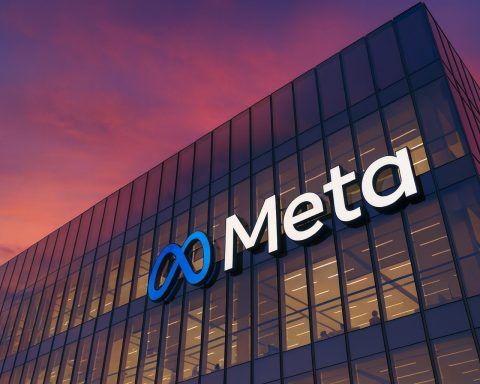- Olema Pharmaceuticals (NASDAQ: OLMA) spiked roughly 200–220% in pre-market trading on November 18, after Swiss pharma giant Roche reported a decisive Phase 3 win for its oral SERD giredestrant in early-stage breast cancer. [1]
- The rally isn’t based on new Olema data today; instead, it’s a “read‑through” trade because Olema’s lead drug palazestrant (OP‑1250) is an oral CERAN/SERD targeting the same hormone pathway. [2]
- Pre‑market gains hit 197–213%, with OLMA changing hands around $26–$27 per share, before easing back toward the low‑$20s during regular trading. Volume exploded to about 13.4 million shares, vs. a three‑month average near 1.28 million. [3]
- Wall Street already had Olema at a “Strong Buy” heading into today, with six Buy ratings and an average price target of about $24–$25, led by LifeSci Capital’s $27 target and Oppenheimer’s $22 target. [4]
- Beyond today’s surge, Olema is advancing two pivotal Phase 3 trials (OPERA‑01 and OPERA‑02) and a new collaboration with Pfizer to combine palazestrant with CDK4 inhibitor atirmociclib, supported by $329 million in cash as of Q3 2025. [5]
Why OLMA Stock Is Exploding Today
Olema Pharmaceuticals didn’t publish a press release or file anything with the SEC this morning. Yet, its stock rocketed nearly threefold in pre‑market trading on Tuesday, November 18, 2025. [6]
The real catalyst comes from Roche.
Roche’s giredestrant delivers a landmark Phase 3 win
Roche’s Genentech unit announced that giredestrant, its investigational oral selective estrogen receptor degrader (SERD), hit the primary endpoint in the Phase 3 lidERA trial in early-stage ER+/HER2- breast cancer. [7]
Key points from today’s breast cancer data:
- The lidERA trial enrolled over 4,100 patients with Stage I–III ER+/HER2- early breast cancer. [8]
- At a pre‑planned interim analysis, giredestrant showed a statistically significant and clinically meaningful improvement in invasive disease‑free survival (iDFS) compared with standard endocrine therapy (aromatase inhibitors). [9]
- It is described as the first oral SERD to outperform aromatase inhibitors in early breast cancer — a milestone in the class. [10]
- Safety looked consistent with prior experience, with no new major safety signals and a tolerable profile. [11]
For Olema, none of that is its own data — but it’s extremely relevant.
Why Roche’s win matters so much for Olema
Olema’s lead asset palazestrant (OP‑1250) is also: [12]
- Orally available
- A complete estrogen receptor antagonist (CERAN)
- And a selective estrogen receptor degrader (SERD)
Mechanistically, palazestrant and giredestrant are in the same therapeutic class: medicines that attack estrogen receptor signaling, a central driver of hormone‑receptor–positive breast cancer. That’s why today’s Roche data are being viewed as class‑validating — they show that an oral SERD can beat aromatase inhibitors in a large, rigorous trial, something no one had definitively proven before. [13]
As TipRanks puts it, investors are “turning to Swiss drugmaker Roche to understand why Olema Pharmaceuticals stock rallied today,” connecting Roche’s adjuvant trial success to Olema’s ongoing metastatic breast cancer program with palazestrant. [14]
Inside Today’s Wild Move in OLMA Stock
From single digits to the mid‑$20s
Heading into Tuesday, OLMA had been trading in the single‑digit to low‑teens range, with StockTitan citing a prior price of $8.52 as of November 17, 2025. [15]
This morning, things went vertical:
- RTTNews’ “Morning Market Movers” report shows Olema up 213% at $26.68 as of 8:10 a.m. ET. [16]
- Both TipRanks and Blockonomi report that OLMA surged about 197.3% in pre‑market trading, with trading activity spiking far above normal. [17]
- Investors.com notes that Olema “soared by over 200%,” reaching roughly $26.28 in pre‑market trading, its highest level in around four years. [18]
By late morning regular trading, StockTitan data show the stock around $22.66, still up about 166% on the day, underscoring how volatile the price action has been. [19]
Volume tells the story
Roche’s trial news didn’t just move the price — it unleashed heavy volume:
- Pre‑market volume hit roughly 13.4 million shares, versus a three‑month daily average of about 1.28 million shares, according to both TipRanks and Blockonomi. [20]
That kind of 10x spike in activity is classic “event‑driven” trading — in this case, driven by a read‑through from a rival’s trial data, not from Olema’s own press release.
Palazestrant: Olema’s Oral SERD Steps Into the Spotlight
If Roche just showed that oral SERDs can outgun aromatase inhibitors in early breast cancer, Olema is trying to prove that palazestrant can do the same — first in metastatic disease, then possibly more broadly.
How palazestrant works
According to Olema and its Pfizer collaboration announcement, palazestrant (OP‑1250) is: [21]
- A complete estrogen receptor antagonist (CERAN)
- A selective estrogen receptor degrader (SERD)
- Designed to block estrogen receptor activity and degrade the receptor, targeting both wild‑type and ESR1‑mutant forms of ER+ breast cancer
It is being developed for ER+/HER2- metastatic breast cancer, currently an area with intense competition from next‑generation endocrine therapies.
Clinical data: encouraging PFS in ribociclib combo
Fresh data from ESMO 2025, summarized by The Clinical Trial Vanguard, show why analysts see promise in palazestrant: [22]
- In a Phase 1b/2 trial of palazestrant + Novartis’s CDK4/6 inhibitor ribociclib in ER+/HER2- advanced or metastatic breast cancer:
- The 120 mg palazestrant cohort achieved median progression‑free survival (PFS) of 15.5 months across all patients, with over 19 months of follow‑up.
- Among patients previously treated with a CDK4/6 inhibitor:
- Median PFS was 12.2 months overall.
- PFS reached 13.8 months in ESR1‑mutant tumors and 9.2 months in ESR1 wild‑type.
- Safety remained favorable, with mostly grade 1–2 adverse events, no new safety signals, and no apparent drug–drug interaction with ribociclib.
Olema has already translated this signal into a pivotal trial, launching OPERA‑02, a Phase 3 study of palazestrant + ribociclib in the frontline metastatic setting, alongside OPERA‑01, which tests palazestrant monotherapy. [23]
Strategic Collaborations: Novartis, Pfizer and Growing Buzz
Deepening alliances with Pfizer
On September 2, 2025, Olema announced a new clinical trial agreement with Pfizer to evaluate palazestrant plus Pfizer’s CDK4 inhibitor atirmociclib in ER+/HER2- metastatic breast cancer. [24]
Key elements of that deal:
- A Phase 1b/2 study in about 35 patients, with initiation planned in H2 2025 / Q4 2025. [25]
- The goal is to inform a potential pivotal Phase 3 trial in frontline metastatic breast cancer.
- Pfizer supplies atirmociclib, while Olema runs the study.
- All clinical data and inventions from the combination will be jointly owned, but Olema keeps full global commercial and marketing rights to palazestrant. [26]
This is Olema’s second clinical trial agreement with Pfizer, building on a prior deal dating back to 2020 involving palazestrant + palbociclib (Ibrance). [27]
Social media chatter and “strategic collaboration” buzz
Quiver Quant’s social sentiment tracker notes a spike in X (Twitter) discussions around OLMA today, citing: [28]
- “Strategic collaboration” buzz in immuno‑dermatology being discussed by traders.
- Renewed interest in palazestrant and the Pfizer collaboration as potential catalysts.
- A sharp uptick in posts calling OLMA a “breakout candidate”, with traders focused on technical price zones and milestones.
So far, the only confirmed strategic deal directly tied to Olema’s value today is the Pfizer atirmociclib collaboration and its longer‑standing Novartis partnership around CDK4/6 combinations. [29]
Investors should treat social media speculation about additional, unrelated collaborations cautiously unless and until they are backed by official company disclosures.
Wall Street Still Likes OLMA — But Price Targets Now Lag the Stock
TipRanks: Strong Buy with big upside (before the spike)
TipRanks’ “Why Is Olema Pharmaceuticals Stock (OLMA) Up Today?” article lays out the pre‑rally Wall Street view: [30]
- Consensus rating: Strong Buy, based on six Buy ratings in the last three months.
- Average OLMA price target: $24.25, implying about 184.62% upside from pre‑rally levels.
- No Sell or Hold ratings in the current sample.
Blockonomi echoes that picture in its own coverage, also highlighting a Strong Buy consensus with an average target around $24.25, representing roughly 185% upside before today’s move. [31]
After a one‑day move of ~200%, those targets are now much closer to the live price. In other words, today’s rally has “used up” much of the upside baked into earlier analyst models, at least on paper.
LifeSci Capital and Oppenheimer stick with Buy ratings
A separate TipRanks ratings piece focuses on LifeSci Capital analyst Sam Slutsky, who: [32]
- Maintained a Buy rating on Olema.
- Reaffirmed a $27 price target.
Slutsky’s bullish thesis centers on:
- The promising palazestrant pipeline, particularly its progress in advanced/metastatic ER+ breast cancer.
- The Phase 3 OPERA‑02 study pairing palazestrant with ribociclib.
- The idea that palazestrant may benefit from higher exposure levels and a more active CDK4/6 inhibitor, potentially yielding competitive PFS outcomes.
The same report notes that Oppenheimer reiterated its Buy rating with a $22 price target on November 11, suggesting that multiple firms were constructive on Olema even before Roche’s lidERA read‑out. [33]
And in today’s Investors.com coverage, Oppenheimer analyst Matthew Biegler even described the Roche news as “Christmas comes early for Olema shares,” underscoring the sense that big‑pharma validation of oral SERDs could materially de‑risk Olema’s strategy. [34]
Price targets vs. reality
Between the $22–$29 range of recent price targets highlighted by Quiver and TipRanks, and a live share price in the low‑$20s to mid‑$20s, investors should recognize: [35]
- Much of the old “upside” story has already been repriced into OLMA today.
- Analysts may update models and targets over the coming days and weeks to reflect both:
- Roche’s validation of the oral SERD class, and
- Olema’s new, higher starting share price.
Financial Position: Cash to Run the Big Trials
Today’s sympathy rally only matters if Olema has the resources to finish its pivotal programs.
From Olema’s Q3 2025 financial update, summarized via StockTitan: [36]
- Cash, cash equivalents and marketable securities: $329.0 million as of September 30, 2025.
- GAAP net loss: $42.2 million for Q3 2025, driven largely by R&D spending of about $40 million.
- Management expects this cash to help fund:
- The ongoing OPERA‑01 monotherapy Phase 3, with top‑line data anticipated in the second half of 2026.
- The OPERA‑02 palazestrant + ribociclib Phase 3 trial, which is now underway.
- Early‑stage work on palazestrant + atirmociclib and the company’s KAT6 inhibitor OP‑3136. [37]
In short, Olema is still a pre‑revenue, loss‑making biotech, but it has substantial cash runway to play out the pivotal trials that investors are now suddenly much more excited about.
What Today’s Move Means for the Breast Cancer SERD Race
Roche’s data don’t guarantee Olema’s success — the trials, patient populations, and lines of therapy are different — but they do change the backdrop.
Potential positives for Olema
- Class validation: An oral SERD beating aromatase inhibitors in early breast cancer strongly supports the mechanism Olema is betting on. [38]
- Regulatory tailwind: If giredestrant ultimately secures approval and becomes a new standard of care, it could normalize oral SERDs for oncologists, opening the door for palazestrant in metastatic and later‑line settings.
- M&A optionality: With Roche, AstraZeneca and others active in SERDs, a smaller, specialized player with late‑stage assets like Olema may look more interesting as a partner or acquisition target, especially given its Pfizer and Novartis ties. [39]
Key risks investors should keep in mind
- Olema has not yet delivered Phase 3 outcome data for palazestrant. Success for one SERD doesn’t guarantee another’s performance — differences in molecule design, dosing, patient selection and trial endpoints all matter.
- Competition will be intense. Roche’s potential lead in early‑stage disease, plus competing SERDs and endocrine innovations, means Olema must show clear differentiation in metastatic and frontline settings.
- The stock move is speculative and event‑driven. Volatility cuts both ways — if future palazestrant data disappoint, sympathy gains can unwind quickly.
- As a pre‑revenue biotech, Olema depends on capital markets and partnerships, and may eventually need to raise more funds, especially beyond OPERA‑01 and OPERA‑02 timelines. [40]
None of this is a recommendation to buy or sell OLMA — it’s a snapshot of how today’s Roche news has reshaped the risk/reward narrative around Olema.
Bottom Line
On November 18, 2025, Roche’s lidERA trial win for giredestrant turned Olema Pharmaceuticals into one of the market’s biggest movers, with OLMA shares surging more than 200% intraday on a powerful combination of class validation, analyst optimism and speculative trading. [41]
Beneath the headline move, Olema brings:
- A late‑stage oral SERD/CERAN (palazestrant) with promising ribociclib combo data and two ongoing Phase 3 trials. [42]
- Strategic collaborations with Novartis and Pfizer that embed palazestrant into broader CDK4/6‑based regimens. [43]
- A Strong Buy analyst consensus coming into the day, though price targets now sit much closer to the live quote after the surge. [44]
For investors, the key questions from here are:
- Can palazestrant’s Phase 3 trials replicate or surpass the promise seen in early‑stage and combo data?
- How will Roche’s success reshape treatment algorithms — and will that be a tailwind or a tougher bar for Olema?
- Do today’s gains reasonably reflect the long‑term probability of success, or has sentiment overshot fundamentals in the short term?
As always, anyone considering OLMA should do their own due diligence, weigh the binary risk of late‑stage oncology trials, and consider consulting a qualified financial advisor before making investment decisions.
References
1. www.rttnews.com, 2. www.tipranks.com, 3. www.tipranks.com, 4. www.tipranks.com, 5. www.globenewswire.com, 6. www.tipranks.com, 7. www.rttnews.com, 8. www.rttnews.com, 9. www.rttnews.com, 10. www.investors.com, 11. www.rttnews.com, 12. www.globenewswire.com, 13. www.rttnews.com, 14. www.tipranks.com, 15. www.stocktitan.net, 16. www.rttnews.com, 17. www.tipranks.com, 18. www.investors.com, 19. www.stocktitan.net, 20. www.tipranks.com, 21. www.globenewswire.com, 22. www.clinicaltrialvanguard.com, 23. www.clinicaltrialvanguard.com, 24. www.globenewswire.com, 25. www.globenewswire.com, 26. www.globenewswire.com, 27. www.globenewswire.com, 28. www.quiverquant.com, 29. www.globenewswire.com, 30. www.tipranks.com, 31. blockonomi.com, 32. www.tipranks.com, 33. www.tipranks.com, 34. www.investors.com, 35. www.quiverquant.com, 36. www.stocktitan.net, 37. www.globenewswire.com, 38. www.rttnews.com, 39. www.tipranks.com, 40. www.stocktitan.net, 41. www.rttnews.com, 42. www.clinicaltrialvanguard.com, 43. www.globenewswire.com, 44. www.tipranks.com







